Sustainability in business doesn’t have to be complicated or costly. This article presents a range of surprisingly easy practices that companies can implement to become more environmentally friendly. Drawing on insights from industry experts, these practical solutions cover various aspects of business operations, from packaging and waste reduction to energy efficiency and sustainable sourcing.
- Off-Grid Living Becomes Reality Through Gradual Steps
- Reusable Containers Simplify Sustainable Lifestyle
- Native Plants Thrive in Ohio Landscaping Projects
- Biodiesel Boosts Forestry Business Profits
- Quarterly Reviews Eliminate Unused Software Subscriptions
- Train Travel Offers Sustainable and Peaceful Journeys
- Biodegradable Bags Solve Jewelry Packaging Challenge
- Quality Checks Improve Recycled Aluminum Machining
- Fluid Recovery Transforms Auto Salvage Operations
- Eco-Friendly Packaging Enhances Brand Connection
- Sand Addition Boosts Garden Bed Productivity
- Reclaimed Stone Streamlines Production and Cuts Costs
- Family Teamwork Reduces Household Waste
- Paperless System Revolutionizes Law Firm Efficiency
- Reusable Bags Become Second Nature
- Refillable Cleaners Cut Plastic Waste Effortlessly
- Composting and Gardening Yield Organic Results
- Simple Trash Separation Creates Sustainable Habits
Off-Grid Living Becomes Reality Through Gradual Steps
Going completely off-grid at my own home seemed impossible when I first considered it 15 years ago. The idea of relying entirely on solar, wind, and battery storage without any grid backup felt like jumping off a cliff.
What made it surprisingly manageable was starting with just one critical system — our refrigeration — and building from there. Instead of trying to power everything at once, we proved the concept with essential appliances first. Once I saw our food staying cold for three straight days during a winter storm using only our battery bank, the fear disappeared.
The breakthrough was realizing that modern battery storage eliminates almost every headache I associated with off-grid living. No more weekly generator maintenance, no more 3 AM fuel runs, no more noise complaints from neighbors. Our LiFePO4 battery system runs silently and charges itself automatically from our solar array.
After 30 years in renewable energy, I’ve learned that the biggest barrier is usually mental–once you see these systems work reliably for even a week, you wonder why you waited so long. Now we help dozens of Northern California families make this same transition, and they’re always amazed at how normal off-grid life actually feels.
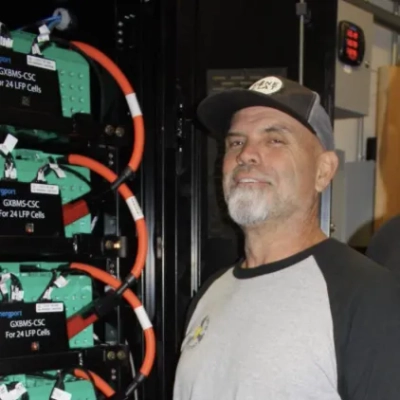 Rody Jonas
Rody Jonas
Owner, Pure Power Solutions
Reusable Containers Simplify Sustainable Lifestyle
One sustainable practice I adopted that initially felt challenging was cutting back on single-use plastics, especially with food and drink on the go. At first, remembering to bring a reusable water bottle or grocery bag felt inconvenient, and I thought it would be difficult to maintain. However, once I incorporated it into my daily routine — keeping a bottle in my bag and extra totes in my car — it quickly became second nature. What made it easier was realizing how much money I saved and how much less clutter I had from disposable containers. The small shift not only reduced waste but also gave me a sense of alignment between my values and my daily actions, which made it feel rewarding instead of restrictive.
 Karen Canham
Karen Canham
Entrepreneur/Board Certified Health and Wellness Coach, Karen Ann Wellness
Native Plants Thrive in Ohio Landscaping Projects
Switching to native plants in our landscaping projects seemed like it would limit our design options and require extensive research, but it became one of our easiest wins. I was worried clients would think native meant “boring” or that I’d need to become a botanist overnight.
The breakthrough was starting with just three reliable Ohio natives: Black-Eyed Susans, Purple Coneflowers, and native hostas for shaded areas. These plants practically sell themselves once clients see how they attract butterflies and require almost zero watering after the first season. I spent less time explaining maintenance requirements and more time designing.
What made it stick was watching our callback rate for struggling plants drop by about 60%. When you install drought-resistant natives instead of finicky non-natives, you’re not getting calls about brown patches or pest problems six months later. Clients love plants that thrive on neglect, and my crew loves not having to troubleshoot failing installations.
The key was realizing native doesn’t mean limited — it means resilient. Once I saw how Purple Coneflowers could handle Troy’s unpredictable weather while non-natives struggled, expanding our native plant palette became exciting rather than restrictive.
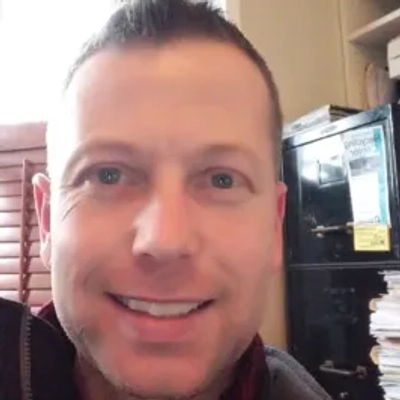 BJ Hamilton
BJ Hamilton
Owner, Natures Own Landscaping
Biodiesel Boosts Forestry Business Profits
Running equipment on biodiesel seemed like it would kill our margins and create maintenance headaches, but switching our forestry mulchers to B20 blend actually saved us money. I was worried about fuel availability across our 150-mile service radius and potential equipment issues during critical jobs.
The breakthrough was partnering with a local Indiana supplier who delivered B20 directly to job sites, eliminating the logistics nightmare I’d imagined. Our Caterpillar mulching attachments ran smoother than expected, and we cut fuel costs by about 12% compared to straight diesel. The reduced emissions also became a selling point with environmentally conscious clients.
What made it stick was seeing immediate cost savings on a large forestry clearing project near Plymouth — we saved $340 in fuel costs alone over three days. Clients started specifically requesting our “eco-friendly mulching” services, and we landed two commercial contracts because of our sustainable fuel practices.
The key was starting with just one piece of equipment on smaller residential jobs to test performance before committing our entire fleet. Once I saw the mulcher handle dense brush clearing without any power loss, scaling up felt like a no-brainer rather than a risky experiment.
 Leon Miller
Leon Miller
Owner, BrushTamer
Quarterly Reviews Eliminate Unused Software Subscriptions
One sustainable practice I adopted was cutting zombie SaaS subscriptions (auto-renewing tools no one actively uses but that keep draining budget and server capacity). At first, it felt tedious to dig through expense lines and permission logs. We worried about canceling something quietly critical. But when we mapped usage data to team logins, we saw that nearly 20% of our software stack was idle.
Removing those licenses cut our software costs and helped reduce the environmental impact of idle servers consuming electricity. It was easier than expected because what I discovered is that most vendors will archive your account so you can restore it later if needed, eliminating the risk of losing critical configurations. Once I realized there was virtually no risk, that review cycle became a recurring quarterly process, and it’s now one of the simplest cost control and sustainability measures in our operations.
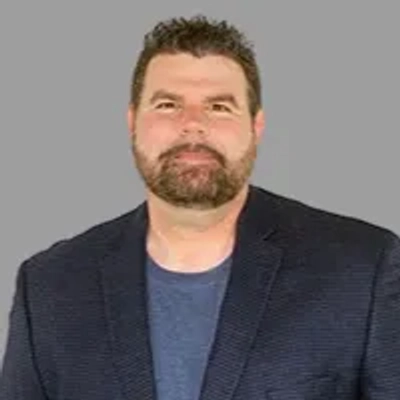 Jeff Mains
Jeff Mains
Founder and CEO, Champion Leadership Group
Train Travel Offers Sustainable and Peaceful Journeys
One sustainable practice I adopted that seemed challenging at first but turned out to be surprisingly easy was choosing trains over planes whenever possible.
At first, the idea felt inconvenient; longer travel times, having to plan each leg, booking multiple tickets, and sometimes dealing with unfamiliar platforms or connections. It just seemed like too much effort, especially when flying felt faster and more straightforward.
But once I actually committed to it, I realized how much more peaceful, meaningful, and sustainable the journey could be. Train travel gave me something flying never could: the ability to slow down, be present, and truly take in the world around me. Watching the landscape shift from city to countryside, crossing borders with no stress, and feeling connected to each place I passed through. It was a different kind of luxury, one rooted in presence, not rush.
It also made me feel better about my environmental footprint. Knowing I was making a conscious choice to reduce carbon emissions while still exploring new places added a deeper layer of purpose to my travel. And practically speaking? No airport queues. No baggage drama. No feeling like I was being herded from one terminal to another. Just calm, comfort, and space to breathe.
What made it easier was removing the pressure to “get there fast” and instead choosing to enjoy the process. I started using apps to plan connections more smoothly, learned to pack lighter, and gave myself more flexible time between destinations. That mindset shift changed everything.
Now, train travel feels like second nature. What I once saw as a hassle has become my favorite way to explore; slower, greener, and much more fulfilling. And I’ve realized that sustainability doesn’t always mean sacrifice. Sometimes, it just means rethinking the journey.
 Chinyelu Karibi-Whyte
Chinyelu Karibi-Whyte
Budget Travel Enthusiast & Guide, Tripping Eagle
Biodegradable Bags Solve Jewelry Packaging Challenge
When I launched my sustainable, vegan-certified recycled silver jewelry brand for cat lovers, I was determined to keep plastic out of every part of our packaging.
I spent months trialing eco-friendly options — fabric pouches, paper wraps, anything that wasn’t plastic. But none of them offered the long-term protection silver needs. Many jewelers told me to just use standard plastic ziplock bags and call it a day. “Tell customers to reuse them so it’s still eco-friendly,” they said. But I wasn’t buying that. It felt like textbook greenwashing — and that only made me more determined to find a better answer.
Then I came across something most jewelers don’t even realize exists: biodegradable ziplock bags specifically designed for jewelry. It hadn’t come up in my early Google searches — I didn’t even know such a thing existed. And I definitely didn’t expect that, when I finally found them, they’d be made in Bangkok — the same city where my jewelry is crafted. The answer had been close to home all along. No extra shipping miles, no compromises.
What started as a problem I thought might take years to solve quickly became a standard part of our process once the right supplier was in place. Now every piece of our jewelry arrives in biodegradable, tarnish-resistant packaging that reflects our values: love for cats, respect for the planet, and craftsmanship that lasts.
 Yuko Tsukada
Yuko Tsukada
Founder, Creative Director, Catastrophy Pte. Ltd.
Quality Checks Improve Recycled Aluminum Machining
I thought our move to use verified recycled aluminum for the bulk of our CNC machining stock would slow us down. Initially, it did. Sourcing was a nightmare. Recycled lots had a variety of certification issues and were often less trustworthy, and one supplier sent us material that failed our hardness test.
We added a fast quality gate before the material goes into the machines: one hardness test and one spectrometer scan per batch. 15 minutes total, but we’ve reduced scrap and rework to nearly zero. AI flagged previous orders where one or two suppliers had more tolerance problems, but it also misinterpreted a spec once and almost let through an unsuitable lot, so we always have a human final sign-off.
The counterintuitive part is that we sped up, after a month or so, by avoiding defects before the cutting starts. The sticking point is the first week or so, but after that it’s just how we work. If you can’t trust your material, you can’t trust your product.
 Ronan Ye
Ronan Ye
Founder, 3ERP
Fluid Recovery Transforms Auto Salvage Operations
I was initially hesitant when we began draining engine oil, transmission fluid, and coolant from every vehicle because I thought it would slow us down and lead to increased disposal costs compared to letting these fluids leak on the ground during processing. It would work, but it felt cumbersome in comparison to removing parts without precautions to avoid making a mess.
However, the real game-changer was when we realized we could actually SELL these fluids instead of simply paying to dispose of them. Even dirty coolant is recyclable, transmission fluid has scrap value, and clean motor oil from low-mileage vehicles can actually be resold. Therefore, what had previously been considered eco-waste was now covering our cost of disposal.
We developed an efficient routine: when a car came in, we immediately drained the fluids into separate, labeled containers so we could sell the good ones and dispose of those that were not. This process adds about 10 more minutes of work per car, but we are making an additional $50 to $100 per car from the recovered waste fluids.
The biggest benefit of this change was the improved cleanliness in our backyard. We eliminated oil stains, reduced the risk of slipping on greasy surfaces, and mitigated potential environmental cleanup problems. Additionally, after documenting our fluid management practices, our insurance company provided a slight rate reduction on our environmental liability coverage.
In the end, it became clear that sound and sensible environmental practices yielded a good profit and provided better safety for all of us. It turns out that the sustainable choice can also be the most fiscally advantageous when implemented under the correct system.
 MARC SKIRVIN
MARC SKIRVIN
President, Cash Auto Salvage
Eco-Friendly Packaging Enhances Brand Connection
One sustainable practice we adopted that initially seemed challenging but turned out to be surprisingly straightforward was transitioning to eco-friendly packaging. At first, I worried about potential costs and whether we could maintain the same level of quality and presentation that our customers expect. However, as we explored sustainable materials and collaborated with the right suppliers, we discovered the cost difference was minimal, and the shift was seamless.
Not only did this move align perfectly with our brand values, but it also resonated strongly with our customers. Many shared their appreciation for our commitment to reducing waste, and it deepened their connection to the brand. What began as a potentially daunting change became one of the easiest and most rewarding steps forward for our business.
 Simon Elliott
Simon Elliott
Founder & Operations Director, CLIFTON
Sand Addition Boosts Garden Bed Productivity
Incorporating sand into our soil composition for raised garden beds was a sustainable practice I initially approached with some hesitation. I was concerned about the labor involved and whether it would truly make a significant difference in our growing outcomes. However, after implementation, we discovered that this simple addition allowed plant roots to spread more extensively, resulting in noticeably faster growth and larger yields than our previous methods. What made this transition particularly manageable was the accessibility of quality sand from local hardware suppliers who offer convenient delivery options. This sustainable approach has now become a standard practice across our growing operations, demonstrating that sometimes the most effective environmental solutions are also the most straightforward to implement.
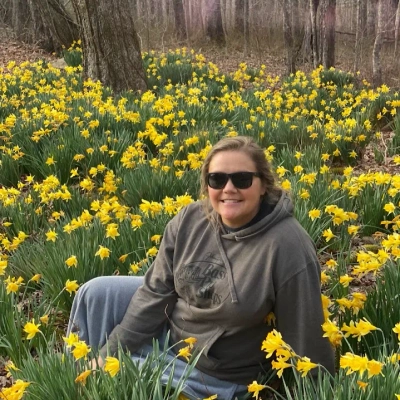 Jackie Sons
Jackie Sons
Owner, Native Wildflowers Nursery
Reclaimed Stone Streamlines Production and Cuts Costs
Switching our production pipeline to prioritize reclaimed stone seemed like a logistical nightmare until we realized it was actually simplifying operations and cutting costs. The dominant narrative says sustainable sourcing slows timelines and limits options; my experience proves the opposite. By tapping into architectural salvage networks in Europe and North America, we bypassed months-long quarry lead times, gained access to unique patinas no factory could replicate, and reduced freight emissions by leveraging existing supply channels. Clients love the authenticity, and we’ve seen project timelines shrink because materials are already processed and ready for installation. What once looked like a compromise became a competitive advantage that now defines our brand identity.
 Erwin Gutenkunst
Erwin Gutenkunst
President and Owner, Neolithic Materials
Family Teamwork Reduces Household Waste
Our two elementary-aged kids often bring home “family assignments” that tie into their school lessons. Recently, we were challenged to find ways to honor our environment — and, to no one’s surprise, they were most excited about tackling garbage! We asked them to choose everyday items, from a single sheet of paper to food containers, and think about how we could reduce waste. Naturally, they noticed Mom’s and Dad’s disposable coffee cups and last night’s takeout dinner, complete with single-use containers.
While we couldn’t eliminate every disposable item right away, we celebrated a few wins. We’ve stopped buying single-use straws, switching instead to washable, reusable ones. Mom and Dad now bring sturdy travel coffee mugs when grabbing a coffee, instead of leaving with another paper cup. The kids love their personalized water bottles, perfect for school and sports. And one of our biggest changes — replacing plastic wrap and paper towels for microwaving with washable silicone covers — has already saved a lot of waste, and a few dollars.
What turned this homework assignment into an ongoing family ritual is teamwork. We regularly share new ideas for avoiding disposables, taking pride in each small success and encouraging each other to keep the momentum going.
 Ashley Kenny
Ashley Kenny
Co-Founder, Heirloom Video Books
Paperless System Revolutionizes Law Firm Efficiency
Going paperless at our personal injury law firm started as a sustainability goal, but it quickly became a catalyst for rethinking how we practice law. As COO, I’m always looking for ways to increase efficiency, deliver more value, and enhance both the employee and client experience. Replacing stacks of paper with a secure digital case management system opened the door for advanced AI tools that cut out repetitive data entry, flag critical case details, and help us strategize faster. That means our team spends less time on administrative tasks and more time advocating for clients, leading to quicker settlements and stronger recoveries. Even our retainer agreements are now fully digital, making it easier and faster for clients to sign while reducing waste. What began as an environmental initiative has streamlined operations, saved time, cut costs, and elevated the quality of service we deliver. Many see sustainability as an added expense, but in our experience, the right initiatives can be powerful drivers of growth, performance, and impact.
 Monica Rothbaum
Monica Rothbaum
Chief Operating Officer & Senior Attorney, J&Y Law
Reusable Bags Become Second Nature
One sustainable practice that initially seemed challenging was switching to a reusable grocery and produce bag system. I used to always forget them or feel like it was inconvenient, but placing them right by the front door and keeping extras in the car made it effortless. Once the habit formed, it felt natural — and I was surprised by how much plastic I stopped using without much effort. The key was making it visible and part of my routine. What felt like a hassle at first became second nature pretty quickly.
 Nick Vitucci
Nick Vitucci
Head of Marketing, Leto Graphics
Refillable Cleaners Cut Plastic Waste Effortlessly
Switching to refillable cleaning concentrates (like Blueland or Grove Co.) felt like a hassle at first. But after one order and a few uses, it’s now second nature, plus we’ve cut plastic waste dramatically. What made it easier: not needing to run to the store and the bottles actually look nicer on the counter.
Little behavior changes like these compound and feel great once you build the habit.
 Neel Parekh
Neel Parekh
Founder & CEO, MaidThis Cleaning
Composting and Gardening Yield Organic Results
For me, this would involve activities such as composting and produce gardening. I believe there can be a learning curve that makes it feel challenging to get started, and that was definitely the case for me. However, once I began growing a few vegetables and herbs, and started a compost heap outside, I discovered it’s relatively easy once you’ve learned the basics. In truth, what made this easier for me was seeing the results. I love having fresh herbs on hand, for instance, and it’s reassuring to know that what I’m using in my garden is all organic and sustainably sourced.
 David Joles
David Joles
Chief Operating Officer, PURCOR Pest Solutions
Simple Trash Separation Creates Sustainable Habits
Funny enough, it was just a matter of separating the trash into organic, non-organic, and recyclable categories. It is the simplest thing, and it does not take a lot of time. I started by buying three different trash cans, each for its designated type of trash. Then, when I take them out, I mark the bag with a Sharpie to indicate what kind of trash it is, so the trash truck does not mix them. Consistency and practice were what made it so easy.
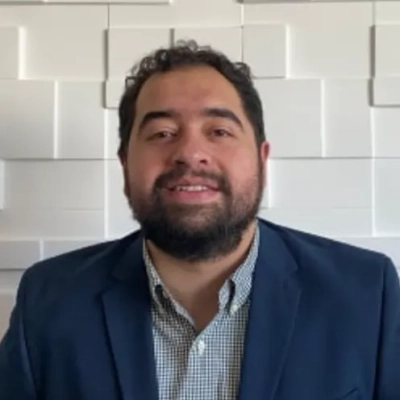 Sebastian Garrido
Sebastian Garrido
Digital Marketing Manager, Vibe Adventures
Grit Daily News is the premier startup news hub. It is the top news source on Millennial and Gen Z startups — from fashion, tech, influencers, entrepreneurship, and funding. Based in New York, our team is global and brings with it over 400 years of combined reporting experience.







